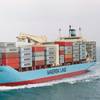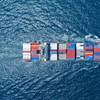The U.S. Coast Guard is proposing mandating vessels
equipped with ballast tanks take measures to prevent and control the spread
of nonindigenous species in U.S. waters through ballast water discharges.
Nonindigenous aquatic plant and animal species (NIS) are increasingly viewed
as a global environmental problem with large and long-lasting ecological and
economic impacts. Introduced into habitats where they are not native, NIS
can degrade ecosystems, resulting in billions of dollars of direct and
indirect costs annually, as well as adverse effects on human health and
lifestyles.
In a Federal Register notice of proposed rulemaking published on July 30,
the Coast Guard, under authority in the National Invasive Species Act of
1996, outlines a mandatory national ballast water management program for all
vessels equipped with ballast water tanks that operate in U.S. waters and/or
enter U.S. waters after operating beyond the exclusive economic zone (EEZ).
Specifically, vessels entering U.S. waters after operating beyond the EEZ
would be required to employ at least one of the following ballast water
management practices:
· Prior to discharging ballast water in U.S. waters, perform complete
ballast water exchange in an area no less than 200 nautical miles from any
shore;
· Retain ballast water onboard the vessel;
· Prior to the vessel entering U.S. waters, use an alternative
environmentally sound method of ballast water management that has been
approved by the U.S. Coast Guard; or
· Discharge ballast water to an approved reception facility.
Featured videos

Taking the First Step Toward Autonomy

Send in the Drones (to deep, dark, confined maritime spaces)
Subscribe for
Maritime Reporter E-News
Maritime Reporter E-News is the maritime industry's largest circulation and most authoritative ENews Service, delivered to your Email five times per week











